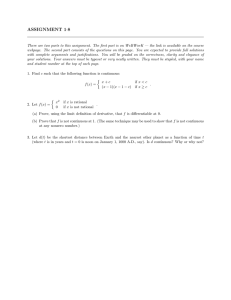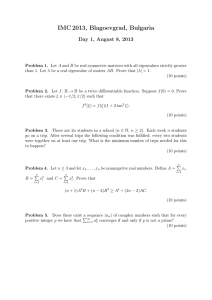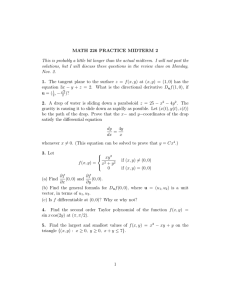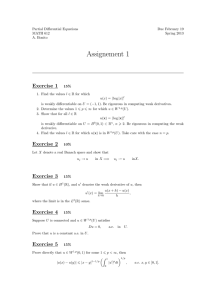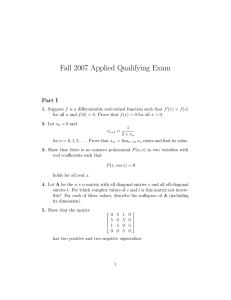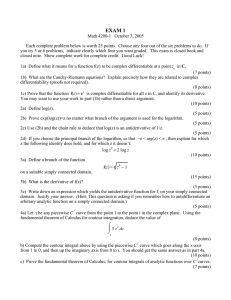MATHEMATICS 541, PROBLEM SET 2 Due on Friday, October 8
advertisement
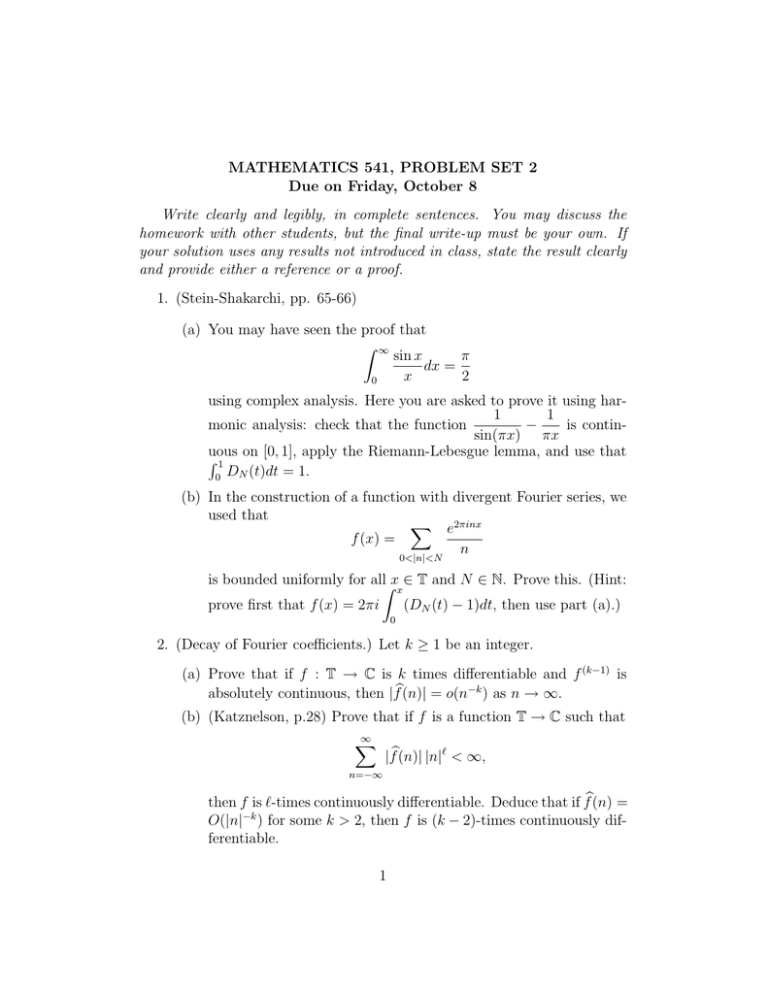
MATHEMATICS 541, PROBLEM SET 2
Due on Friday, October 8
Write clearly and legibly, in complete sentences. You may discuss the
homework with other students, but the final write-up must be your own. If
your solution uses any results not introduced in class, state the result clearly
and provide either a reference or a proof.
1. (Stein-Shakarchi, pp. 65-66)
(a) You may have seen the proof that
Z ∞
π
sin x
dx =
x
2
0
using complex analysis. Here you are asked to prove it using har1
1
monic analysis: check that the function
−
is continsin(πx) πx
uous
R 1 on [0, 1], apply the Riemann-Lebesgue lemma, and use that
DN (t)dt = 1.
0
(b) In the construction of a function with divergent Fourier series, we
used that
X e2πinx
f (x) =
n
0<|n|<N
is bounded uniformly for allZ x ∈ T and N ∈ N. Prove this. (Hint:
x
(DN (t) − 1)dt, then use part (a).)
prove first that f (x) = 2πi
0
2. (Decay of Fourier coefficients.) Let k ≥ 1 be an integer.
(a) Prove that if f : T → C is k times differentiable and f (k−1) is
absolutely continuous, then |fb(n)| = o(n−k ) as n → ∞.
(b) (Katznelson, p.28) Prove that if f is a function T → C such that
∞
X
|fb(n)| |n|` < ∞,
n=−∞
then f is `-times continuously differentiable. Deduce that if fb(n) =
O(|n|−k ) for some k > 2, then f is (k − 2)-times continuously differentiable.
1
3. (Stein-Shakarchi, page 123) Prove that for any a 6= 0, and σ with
0 < σ < 1, the sequence {anσ }, n = 1, 2, . . . , is equidistributed on T.
(Hint: Prove that for all b 6= 0,
N
X
e
2πibnσ
PN
n=1
−
N
e
2πibnσ
1
n=1
deduce that
Z
=O
N
X
n=1
σ
e2πibn = O(N σ ) + O(N 1−σ ).)
2
−1+σ
n
;


